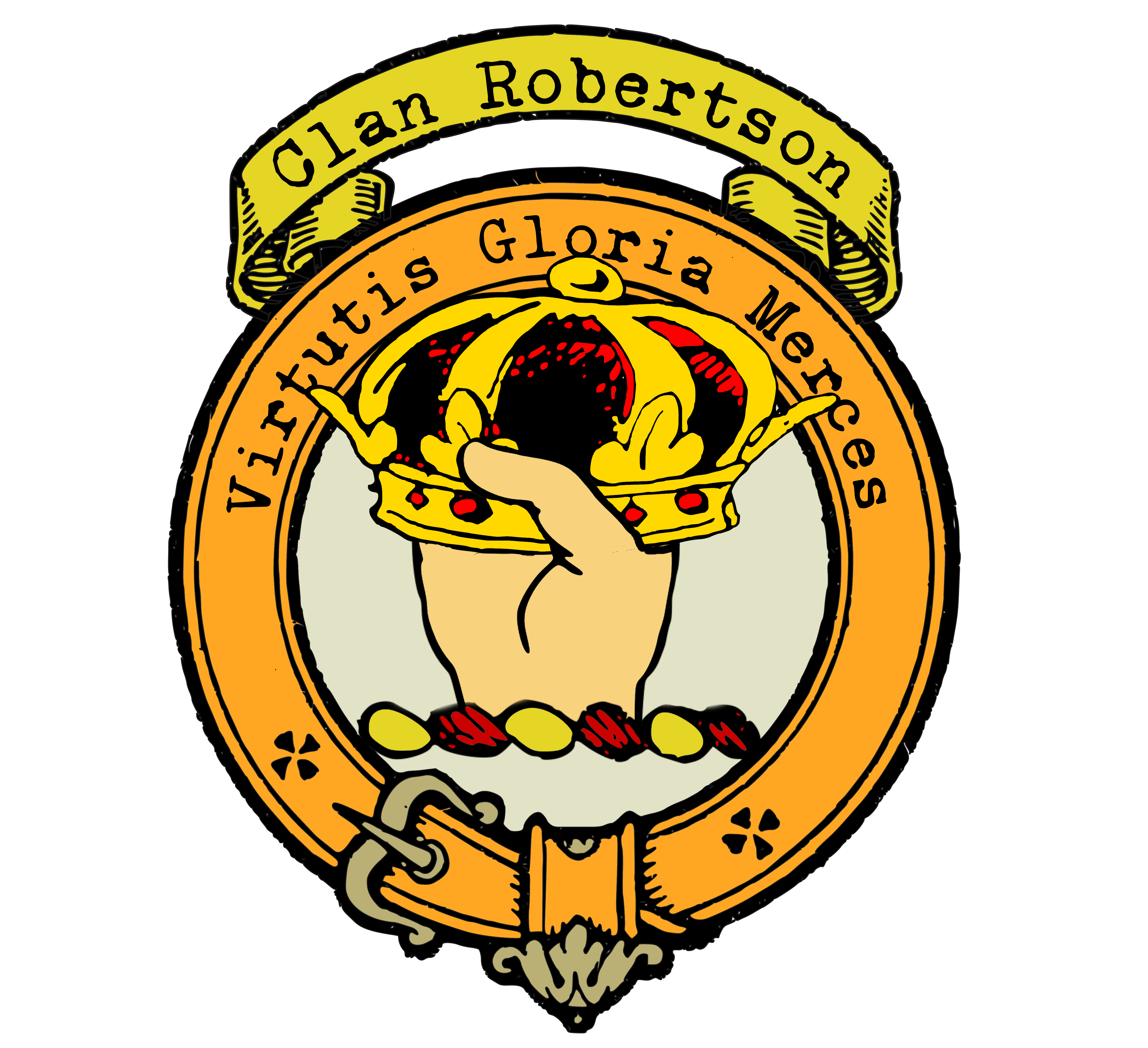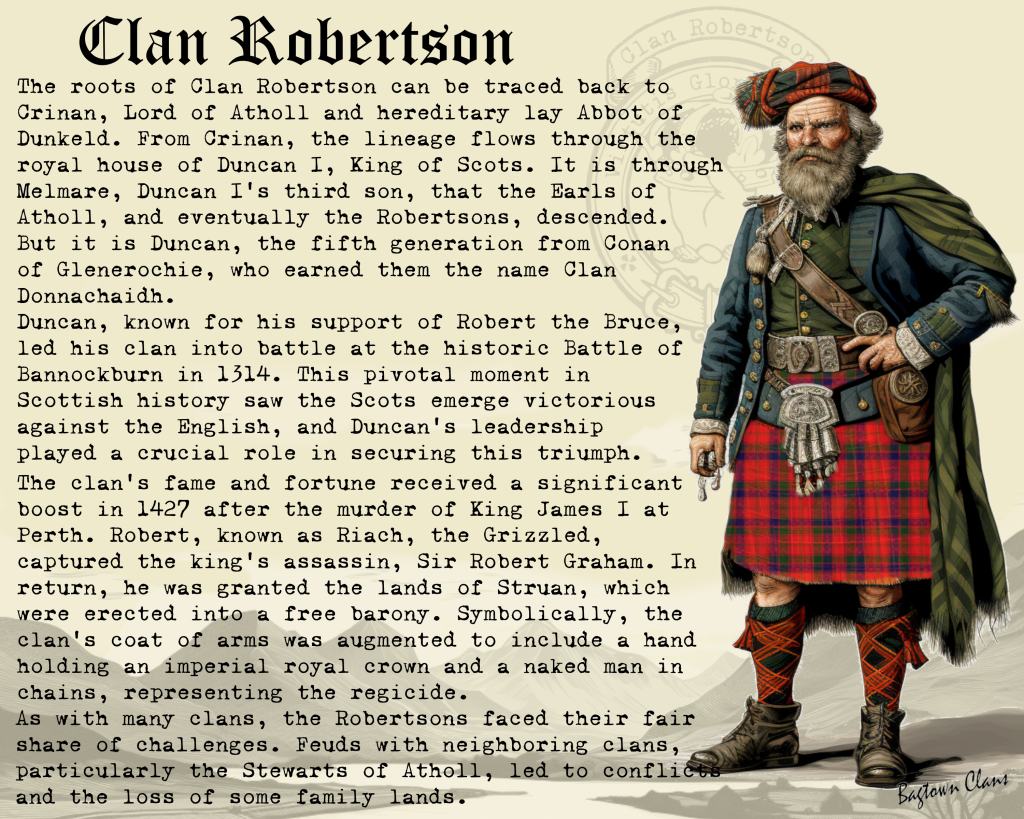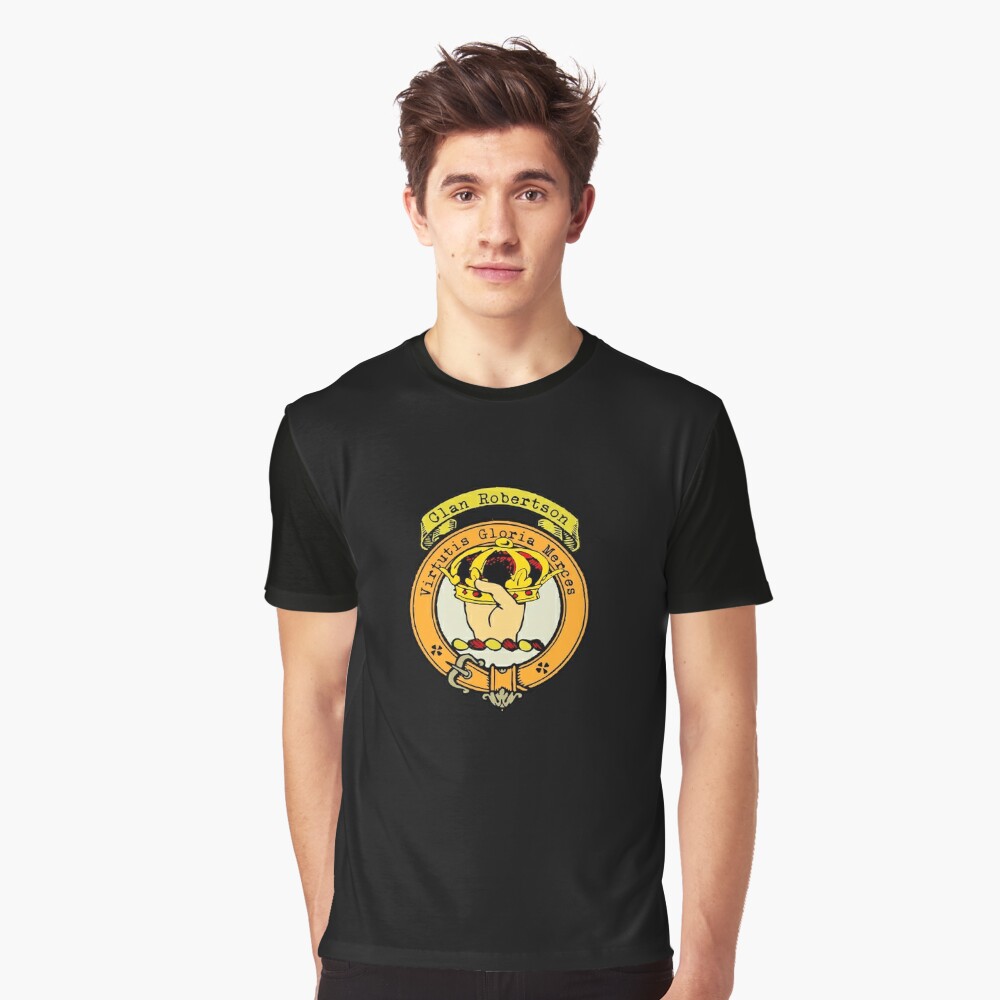Clan Robertson
|
|
CREST: A dexter had holding up an imperial crown Proper MOTTO: Virtutis gloria merces TRANSLATION: Glory is the reward of valor VARIATIONS: Donnachaidh |
 The roots of Clan Robertson can be traced back to Crinan, Lord of Atholl and hereditary lay Abbot of Dunkeld. From Crinan, the lineage flows through the royal house of Duncan I, King of Scots. It is through Melmare, Duncan I’s third son, that the Earls of Atholl, and eventually the Robertsons, descended. But it is Duncan, the fifth generation from Conan of Glenerochie, who earned them the name Clan Donnachaidh. The roots of Clan Robertson can be traced back to Crinan, Lord of Atholl and hereditary lay Abbot of Dunkeld. From Crinan, the lineage flows through the royal house of Duncan I, King of Scots. It is through Melmare, Duncan I’s third son, that the Earls of Atholl, and eventually the Robertsons, descended. But it is Duncan, the fifth generation from Conan of Glenerochie, who earned them the name Clan Donnachaidh.
Duncan, known for his support of Robert the Bruce, led his clan into battle at the historic Battle of Bannockburn in 1314. This pivotal moment in Scottish history saw the Scots emerge victorious against the English, and Duncan’s leadership played a crucial role in securing this triumph. The clan’s fame and fortune received a significant boost in 1427 after the murder of King James I at Perth. Robert, known as Riach, the Grizzled, captured the king’s assassin, Sir Robert Graham. In return, he was granted the lands of Struan, which were erected into a free barony. Symbolically, the clan’s coat of arms was augmented to include a hand holding an imperial royal crown and a naked man in chains, representing the regicide. As with many clans, the Robertsons faced their fair share of challenges. Feuds with neighboring clans, particularly the Stewarts of Atholl, led to conflicts and the loss of some family lands. Tragedy struck when the eighth chief was murdered, leaving behind a debt-ridden estate. In 1606, John Robertson, a prosperous Edinburgh merchant claiming kinship to the clan, obtained a charter that allowed him to recover the lands of Robertson of Struan without monetary exchange. The chiefship passed to an infant, Alexander, in 1636, and his uncle, Donald, known as the Tutor of Struan, played a pivotal role in the clan’s support of the royalist cause during the civil war. Alexander, the “Poet Chief,” found himself in exile in France after the defeat of James VII in 1690. He later returned to Scotland but remained a staunch supporter of the Stuart cause. Despite his sufferings, he stood with Prince Charles Edward Stuart in the Jacobite uprising of 1715. Over the years, the chiefship changed hands within the Robertson clan, facing periods of forfeiture and restoration. In 1854, George, the eighteenth chief, sold the barony of Struan but reserved the right of interment in the family burial ground. Later, chiefs lived in Jamaica and eventually returned to take up farming in Kent. |
|
Citations:
|
|
Purchase @ Redbubble
Purchase @ Amazon.com
Purchase @ Amazon.co.uk


